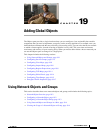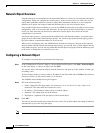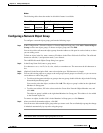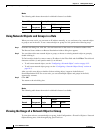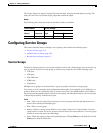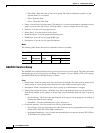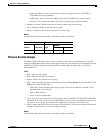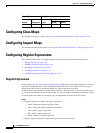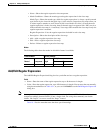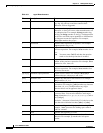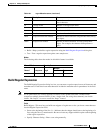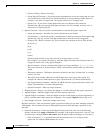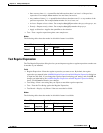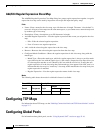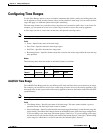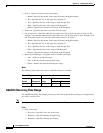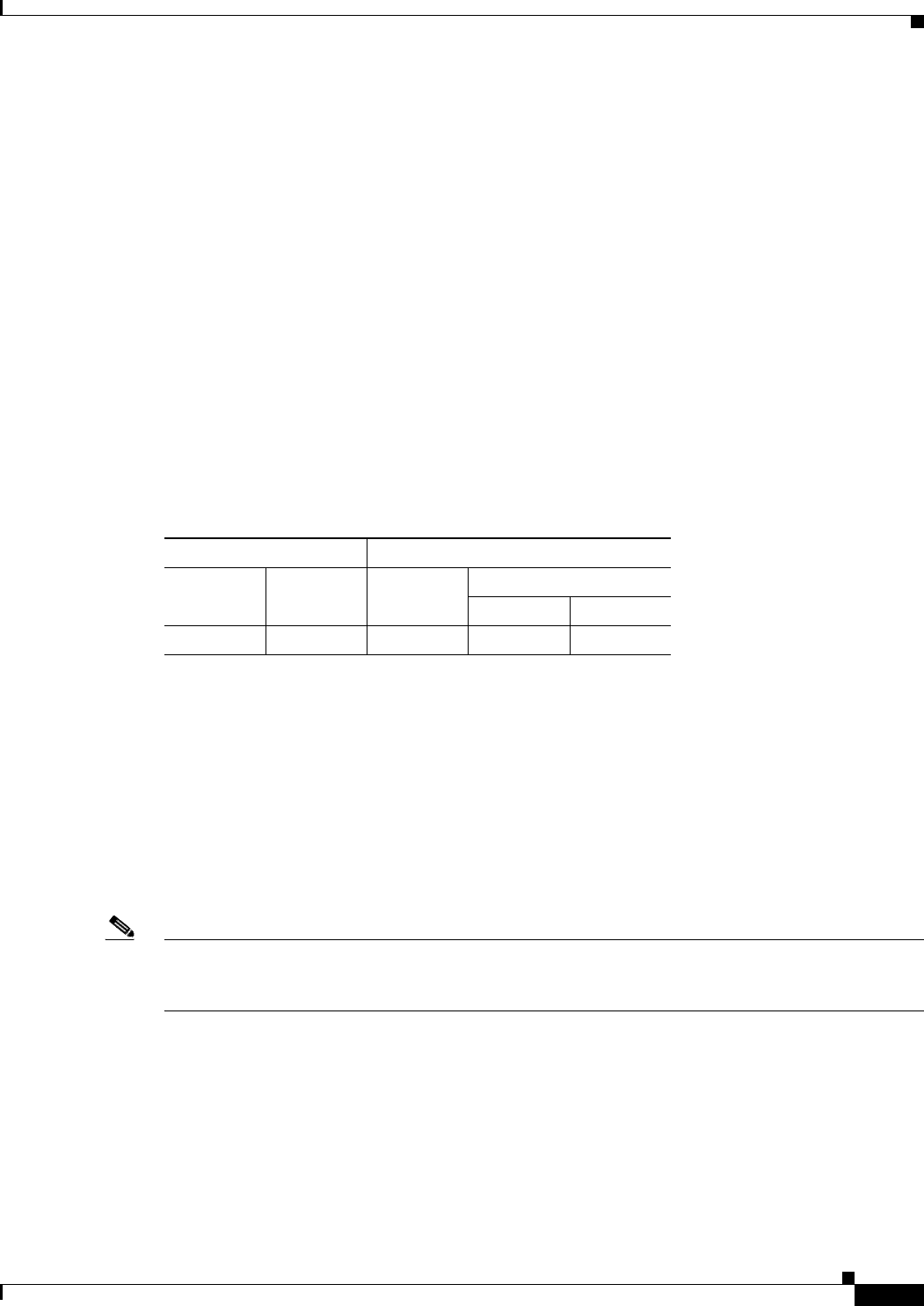
19-9
Cisco ASDM User Guide
OL-16647-01
Chapter 19 Adding Global Objects
Configuring Regular Expressions
–
Name—Shows the regular expression class map name.
–
Match Conditions—Shows the match type and regular expressions in the class map.
Match Type—Shows the match type, which for regular expressions is always a positive match
type (shown by the icon with the equal sign (=)) the criteria. (Inspection class maps allow you
to create negative matches as well (shown by the icon with the red circle)). If more than one
regular expression is in the class map, then each match type icon appears with “OR” next it, to
indicate that this class map is a “match any” class map; traffic matches the class map if only one
regular expression is matched.
Regular Expression—Lists the regular expressions included in each class map.
–
Description—Shows the description of the class map.
–
Add—Adds a regular expression class map.
–
Edit—Edits a regular expression class map.
–
Delete—Deletes a regular expression class map.
Modes
The following table shows the modes in which this feature is available:
Add/Edit Regular Expression
The Add/Edit Regular Expression dialog box lets you define and test a regular expression.
Fields
• Name—Enter the name of the regular expression, up to 40 characters in length.
• Value—Enter the regular expression, up to 100 characters in length. You can enter the text manually,
using the metacharacters in Table 19-1, or you can click Build to use the Build Regular Expression
dialog box.
Note As an optimization, the security appliance searches on the deobfuscated URL. Deobfuscation
compresses multiple forward slashes (/) into a single slash. For strings that commonly use double
slashes, like “http://”, be sure to search for “http:/” instead.
Table 19-1 lists the metacharacters that have special meanings.
Firewall Mode Security Context
Routed Transparent Single
Multiple
Context System
• • • •—



